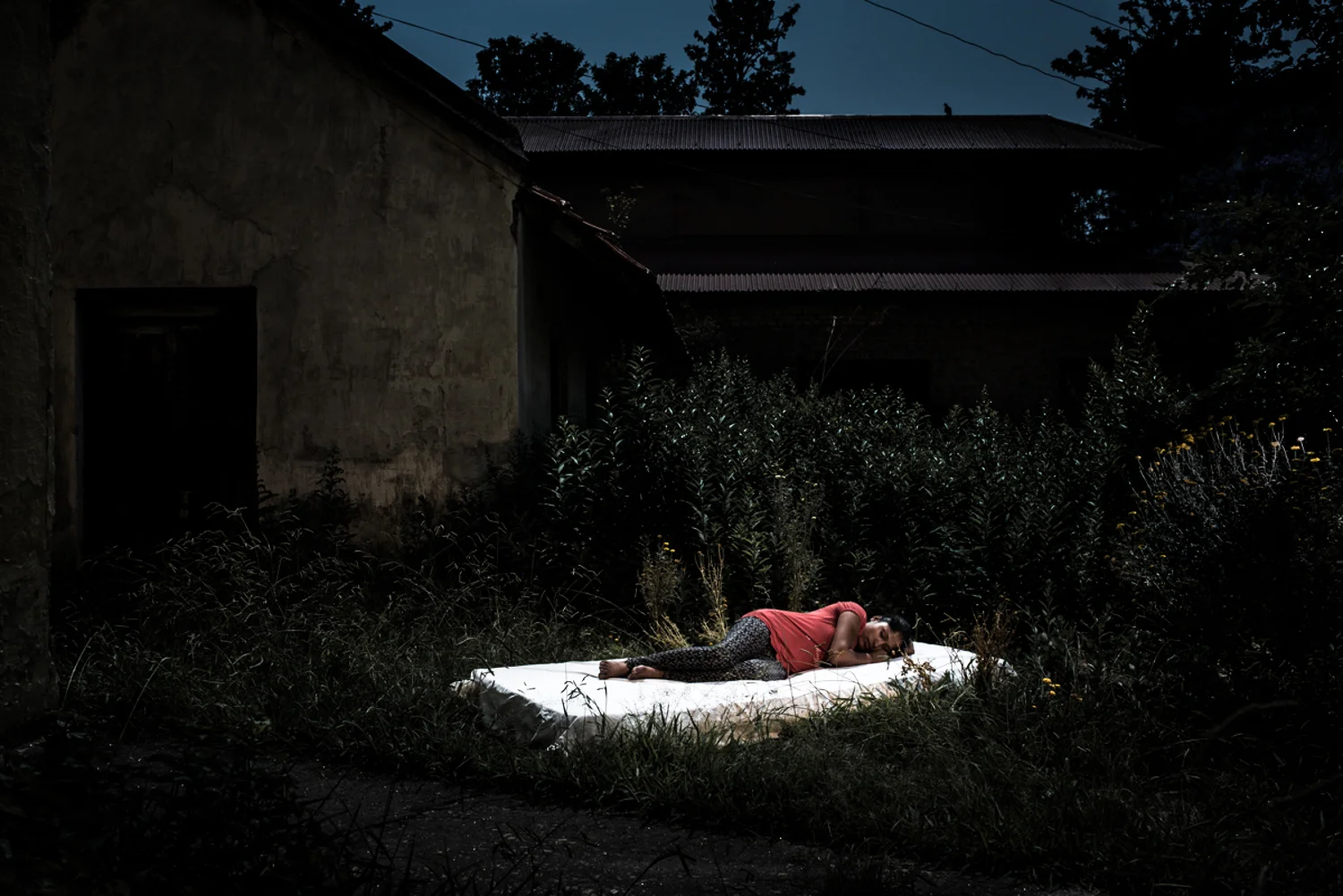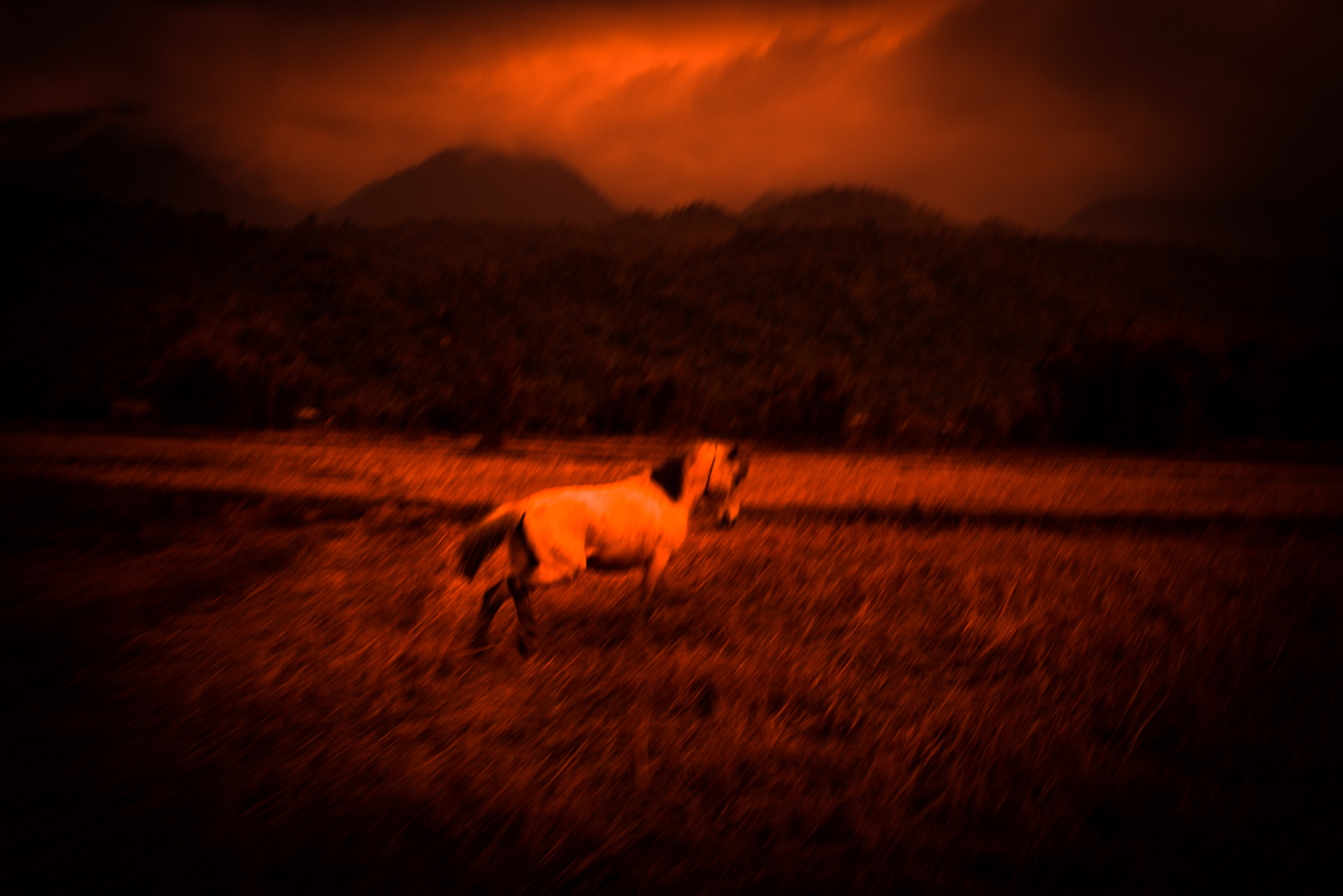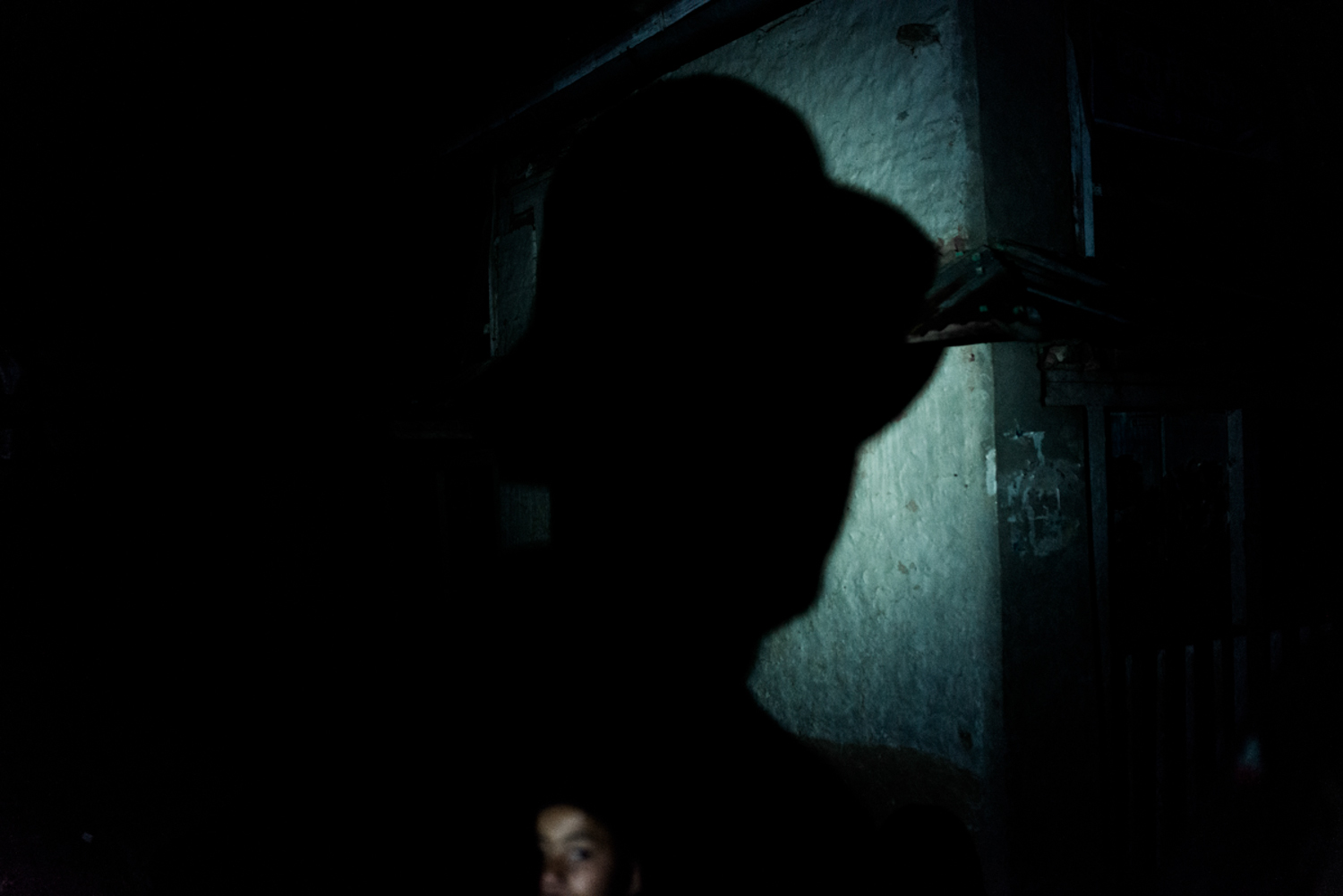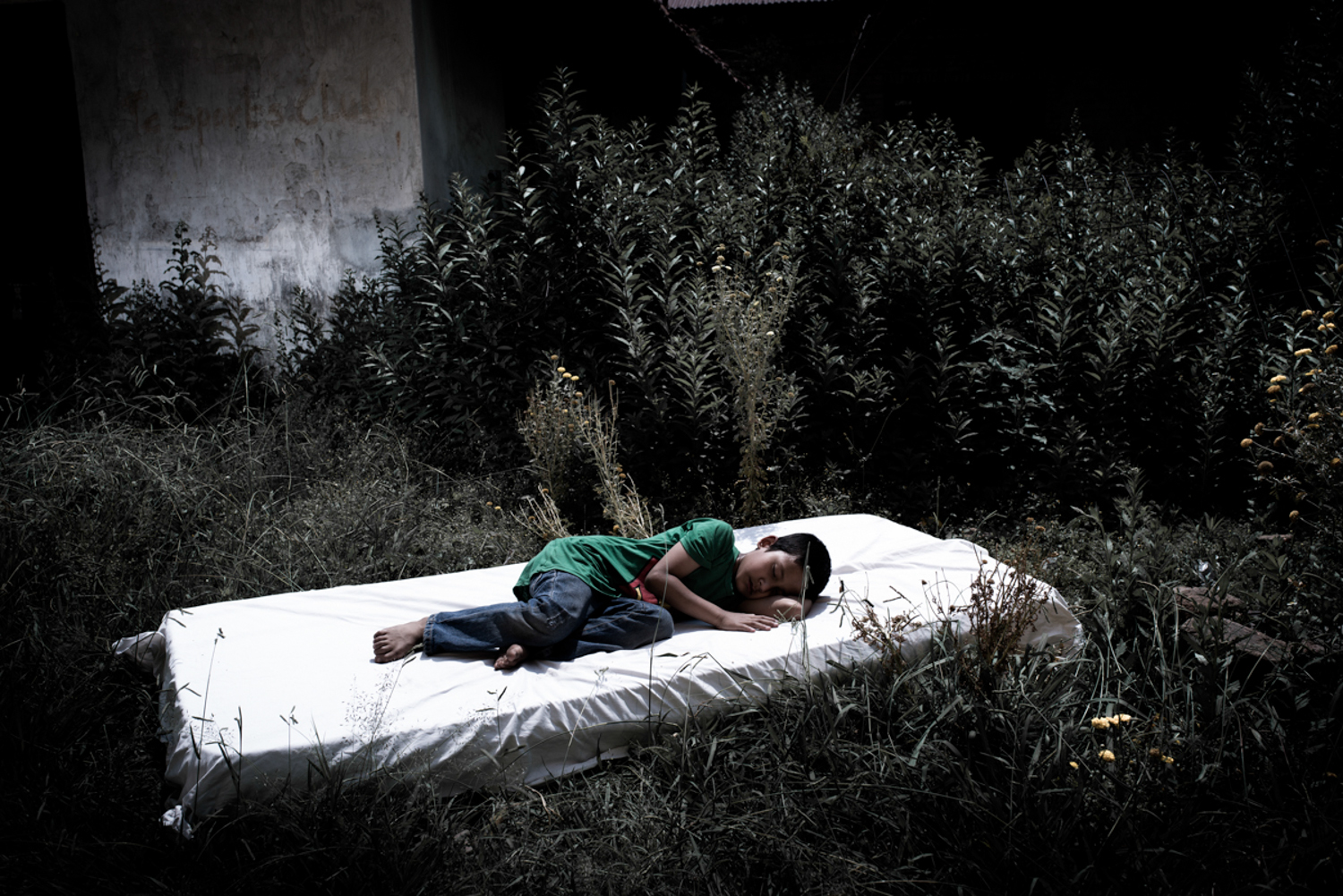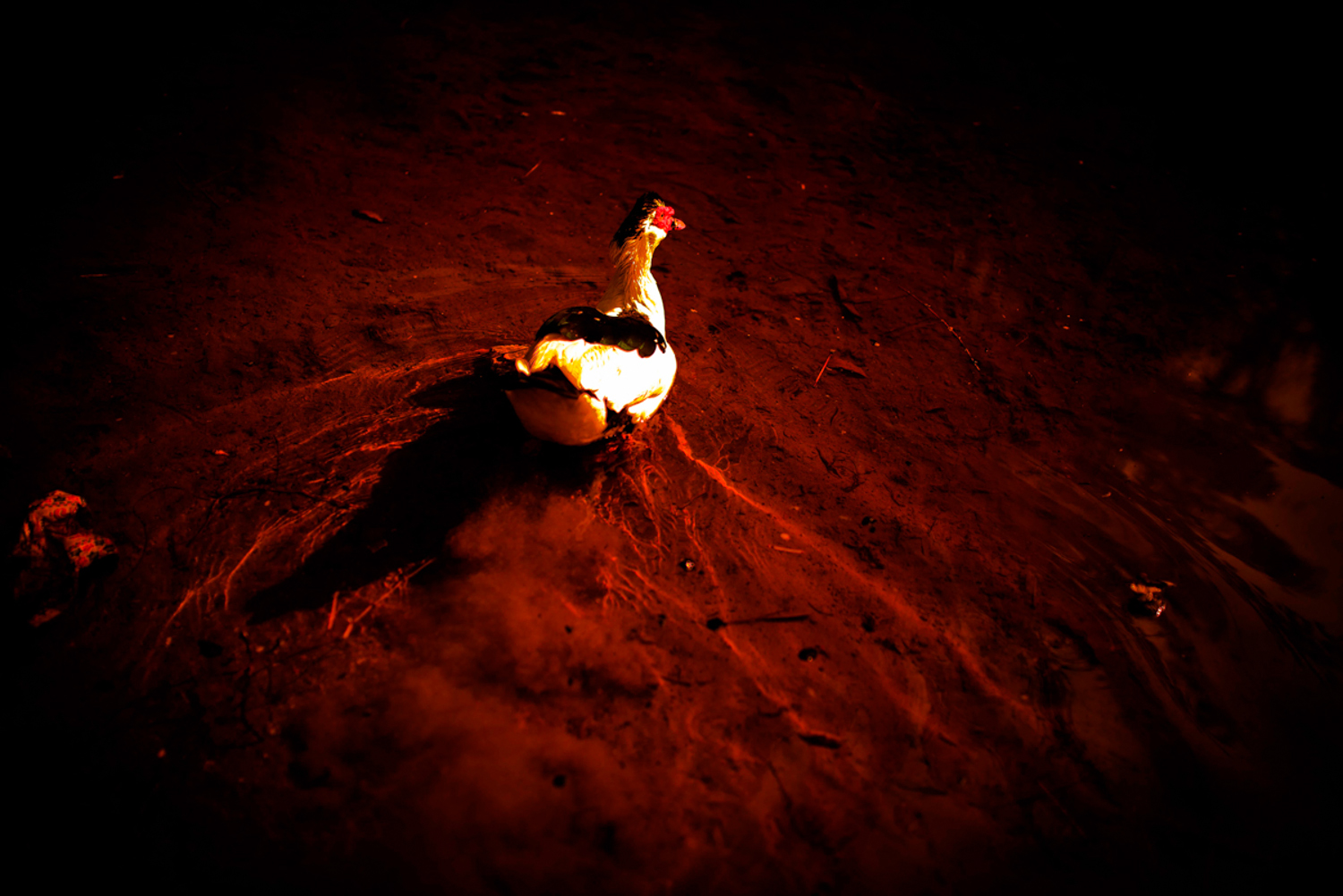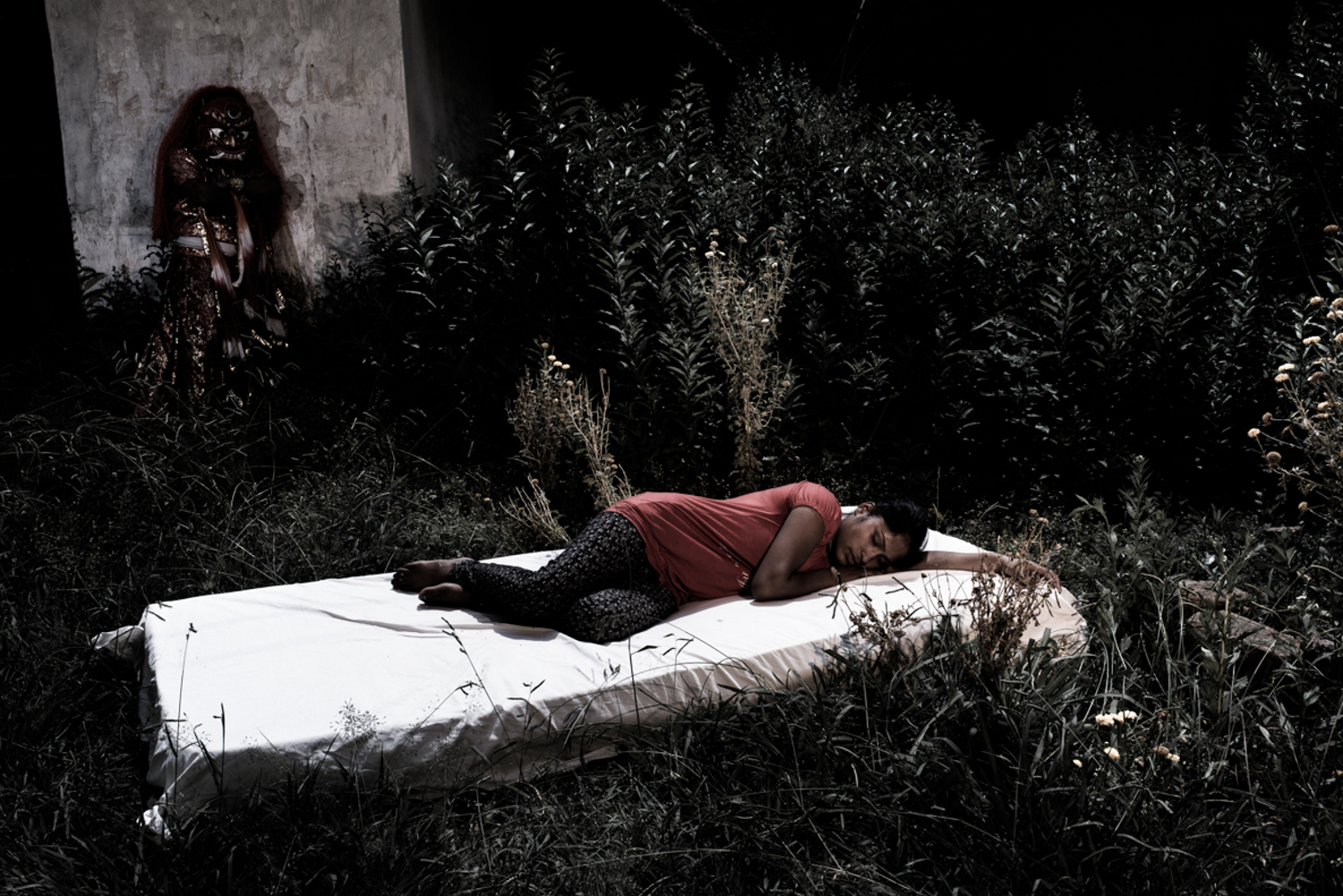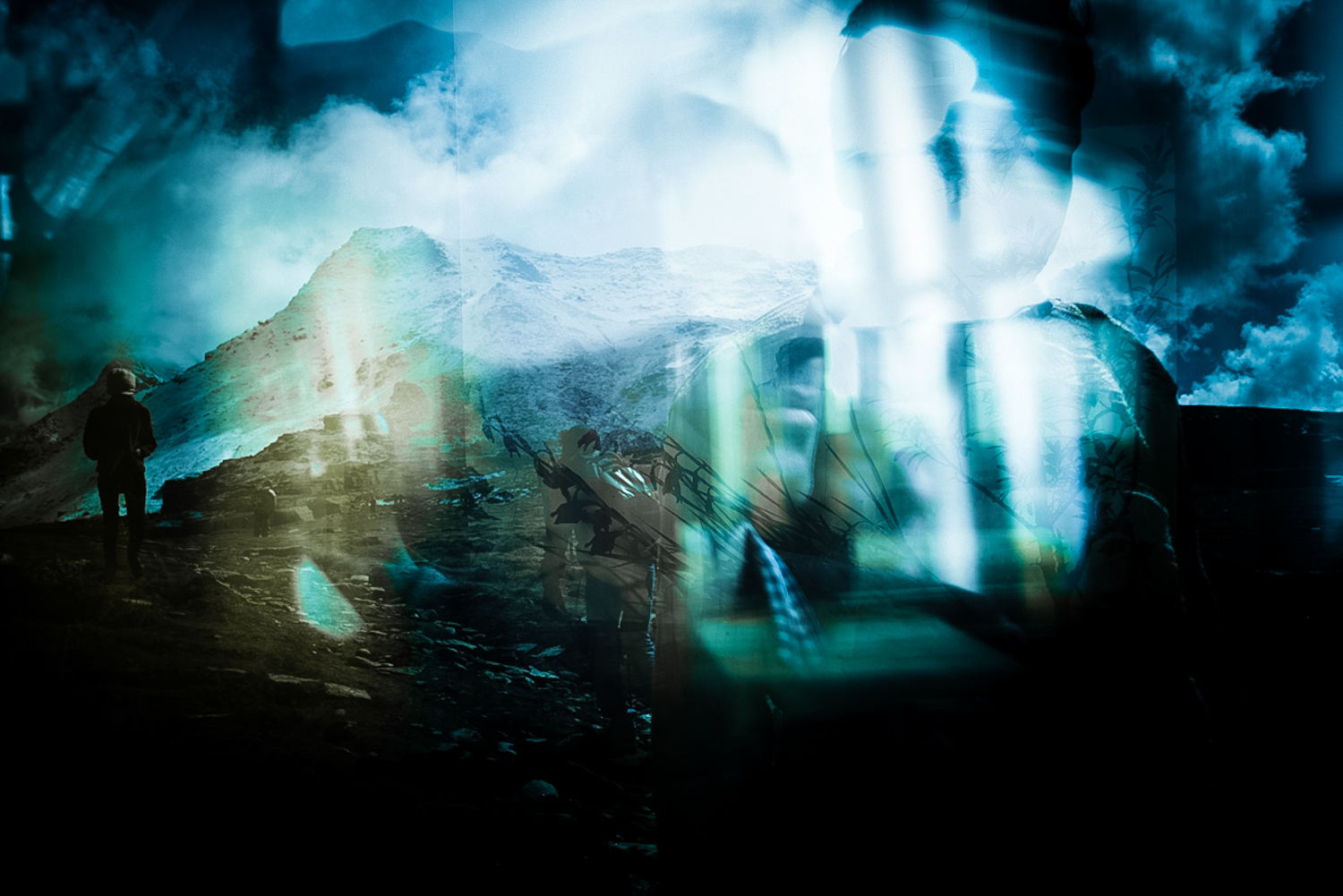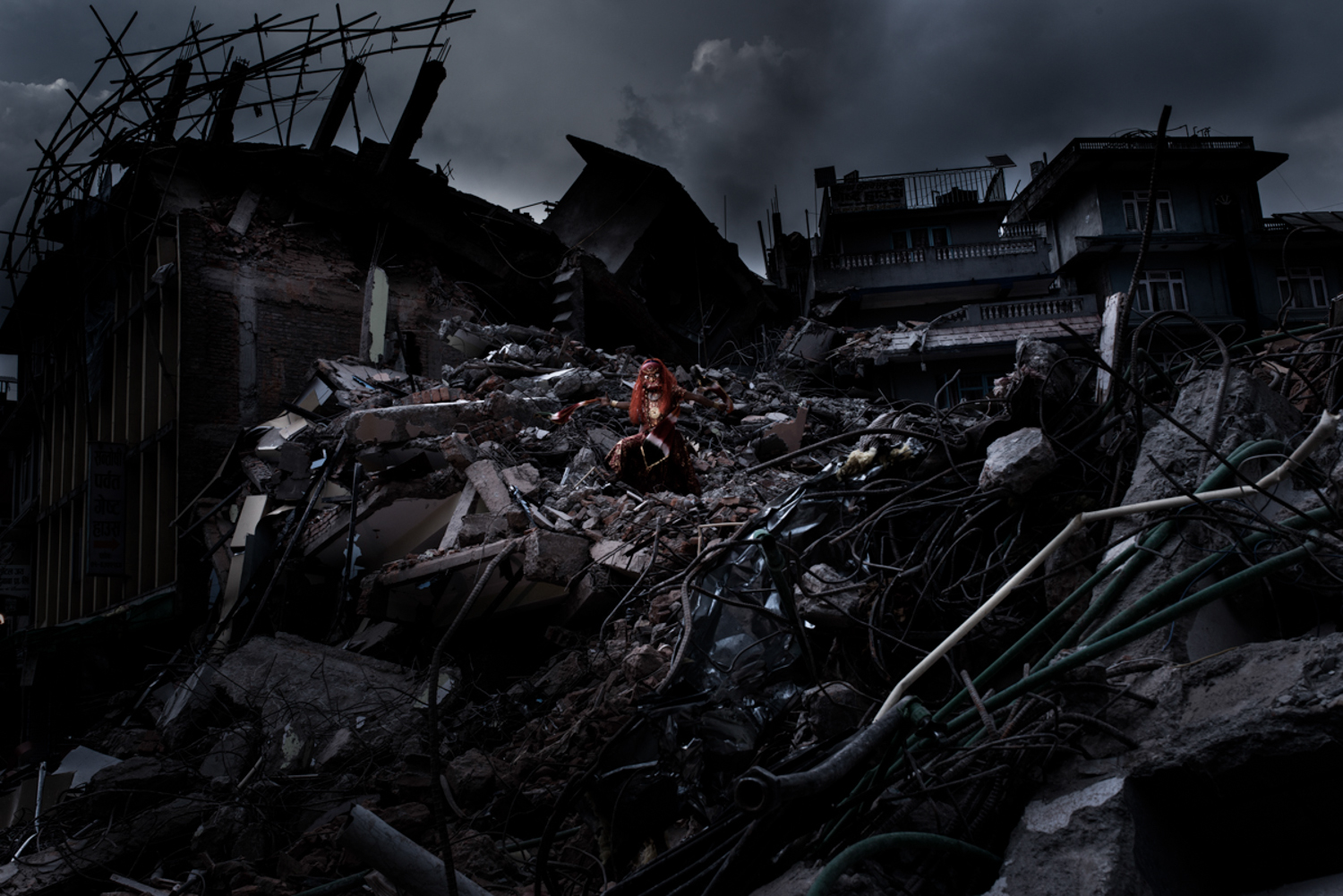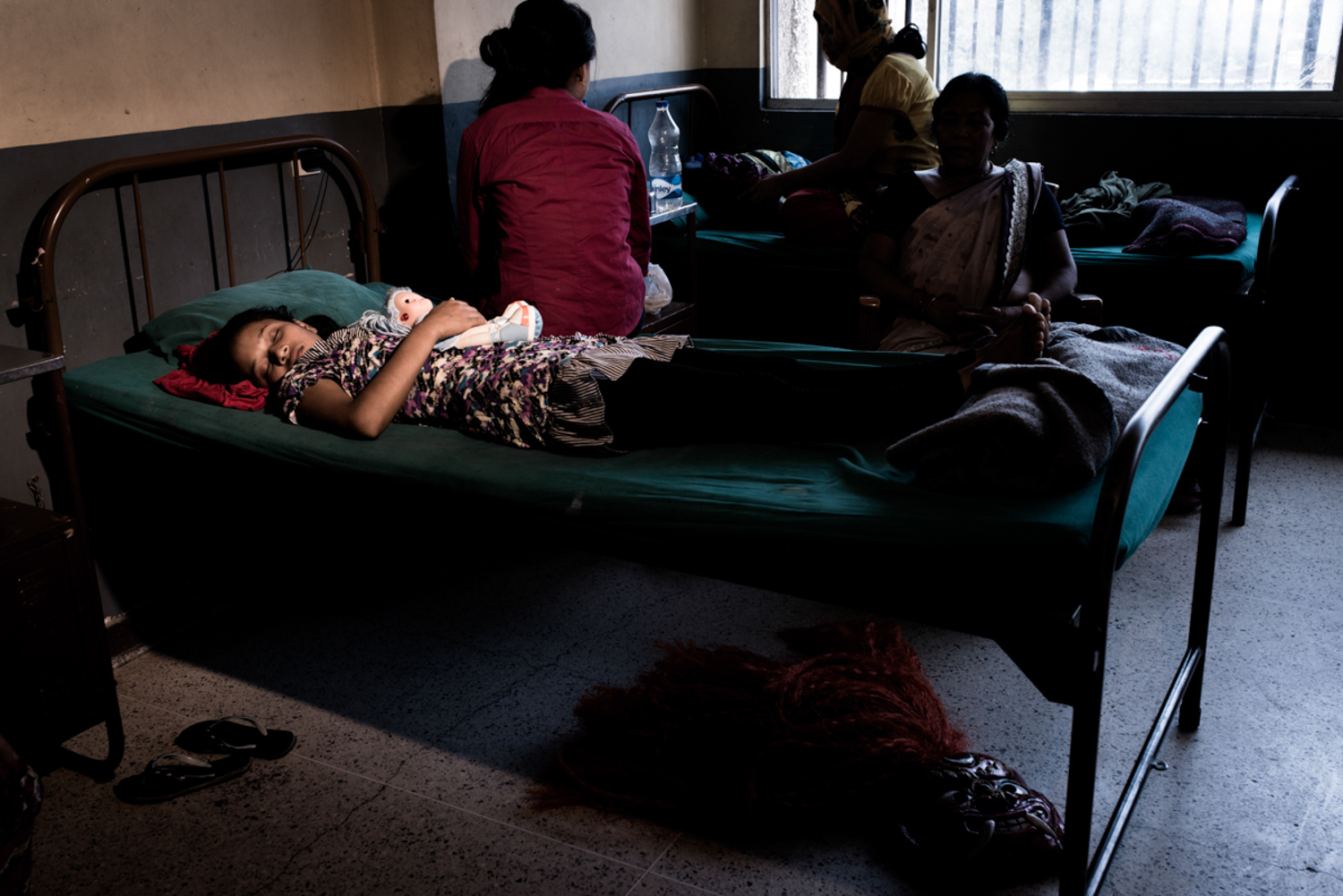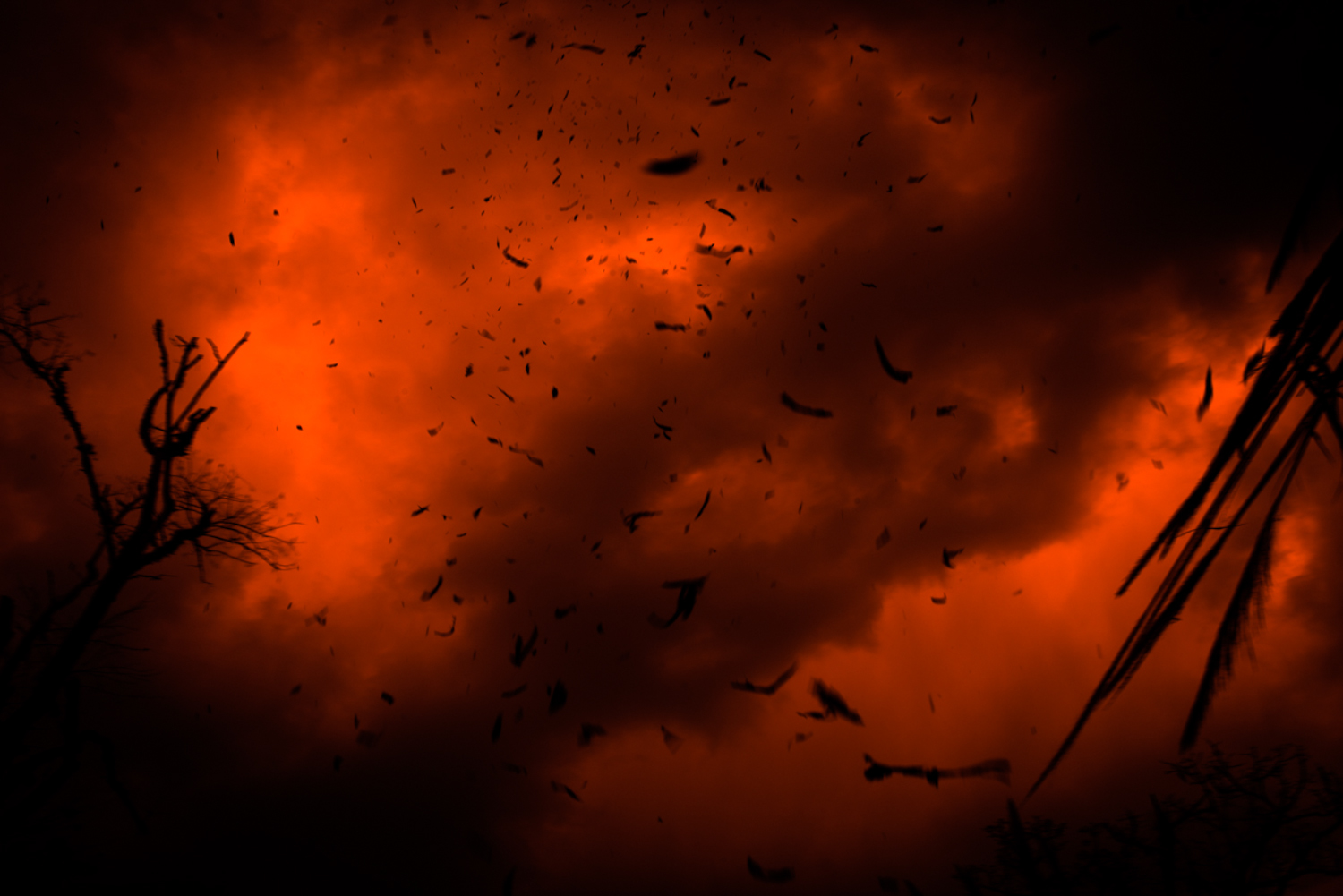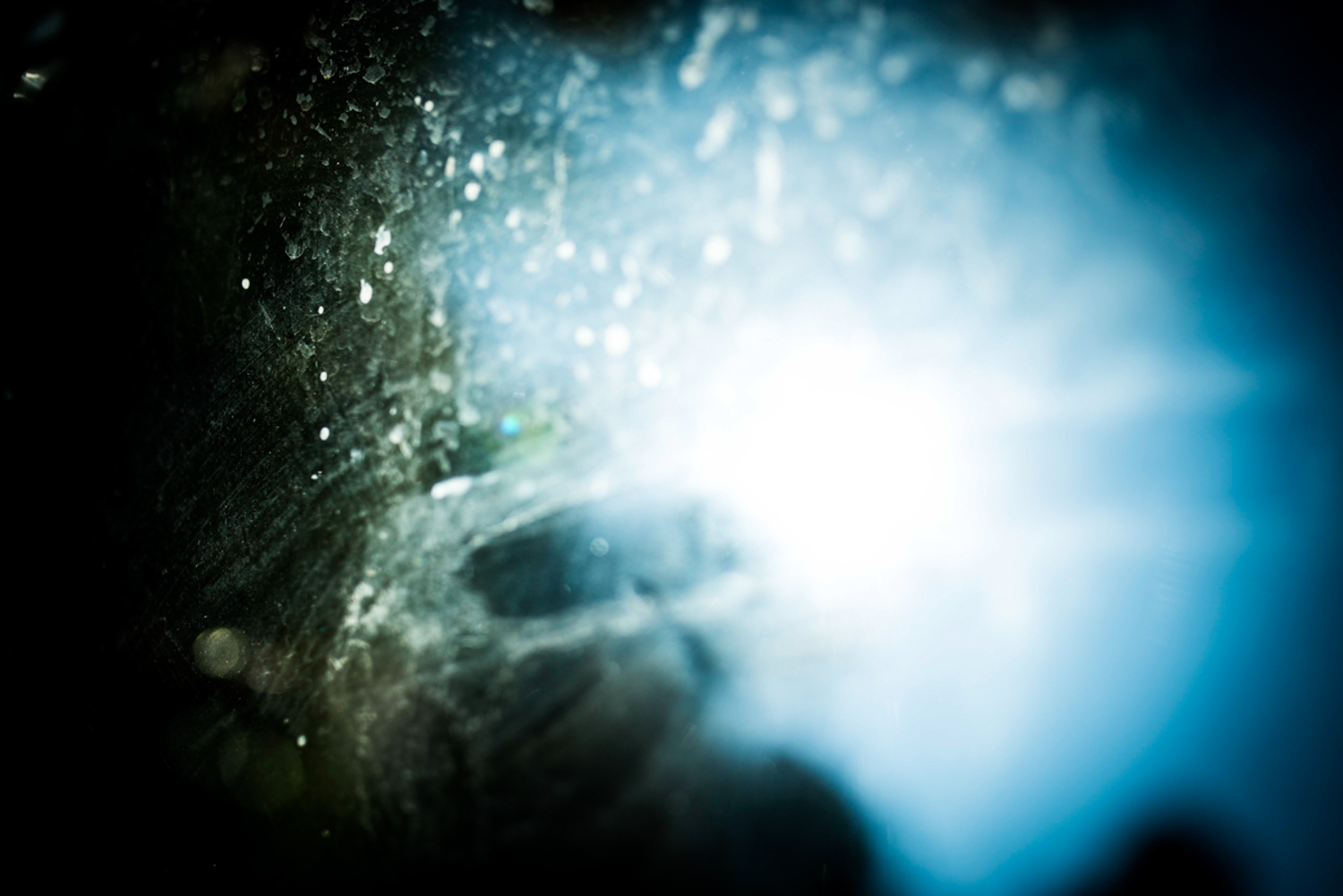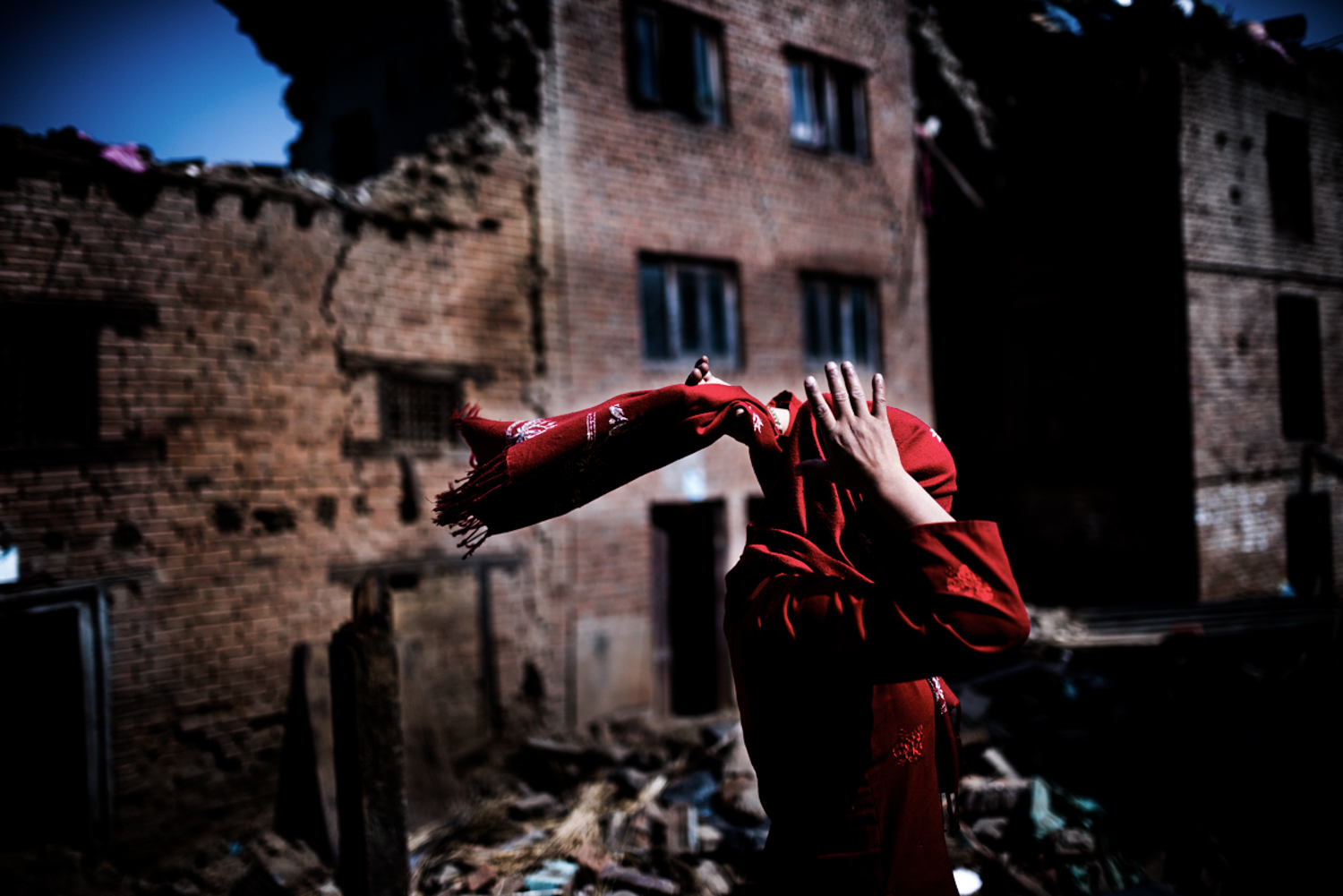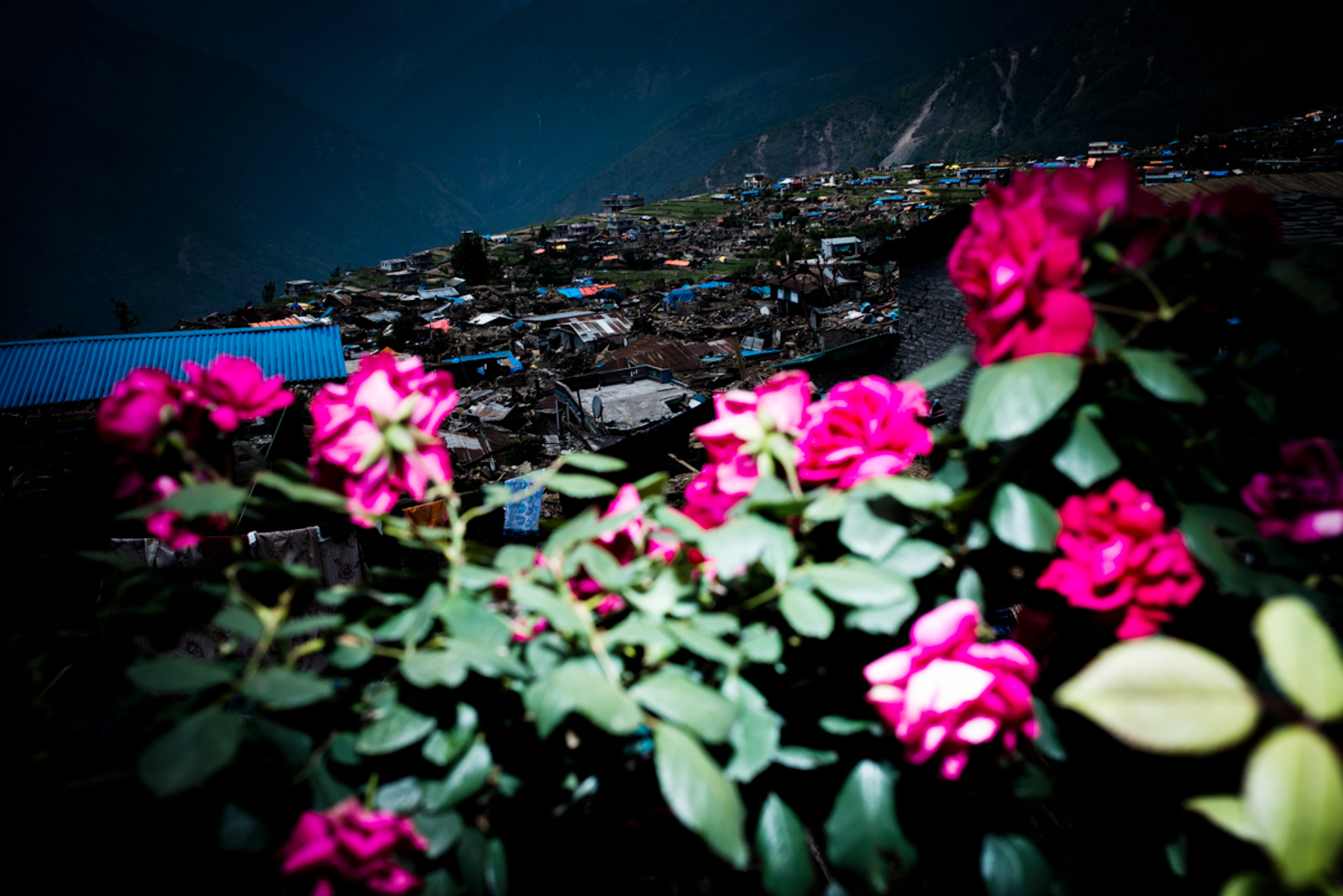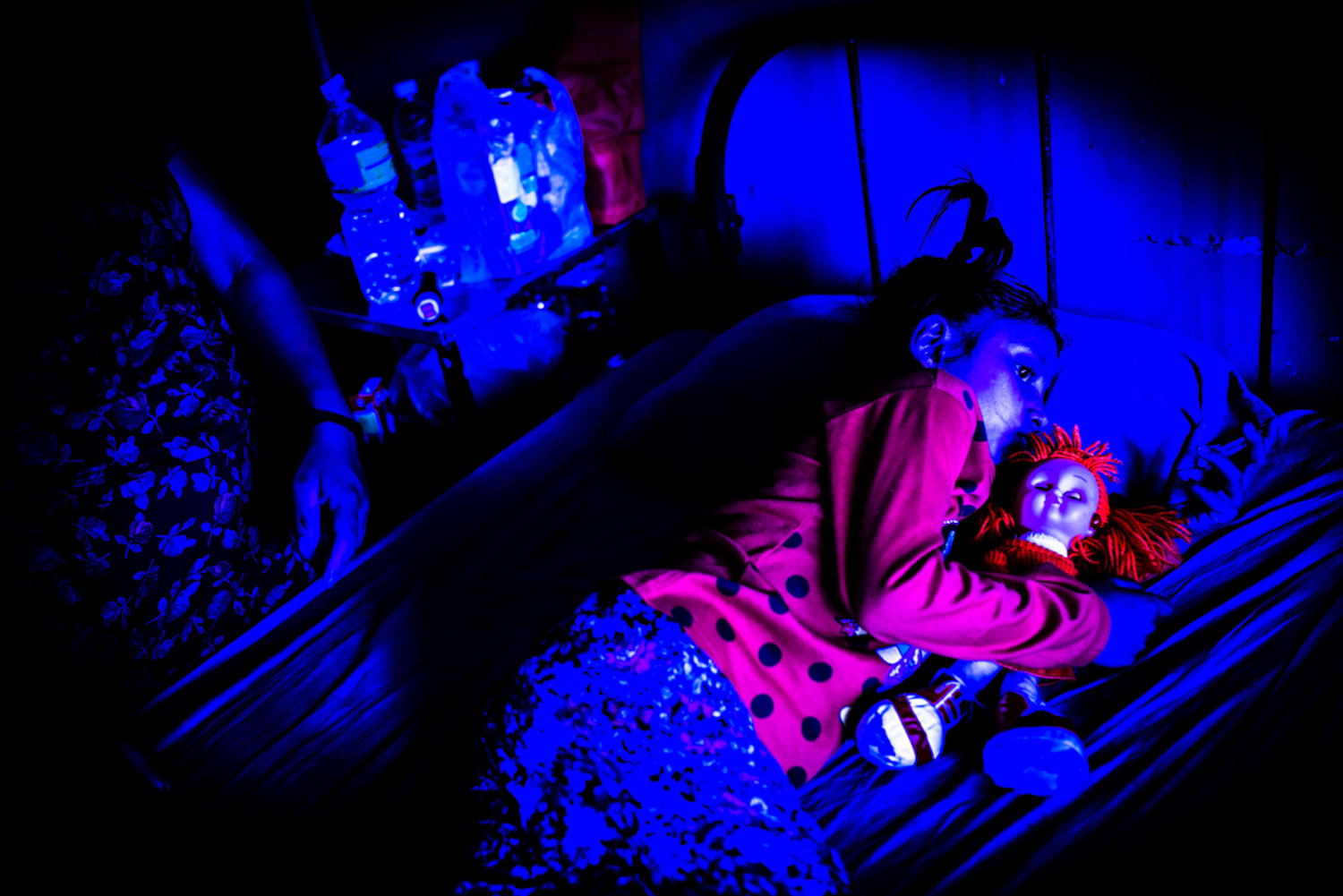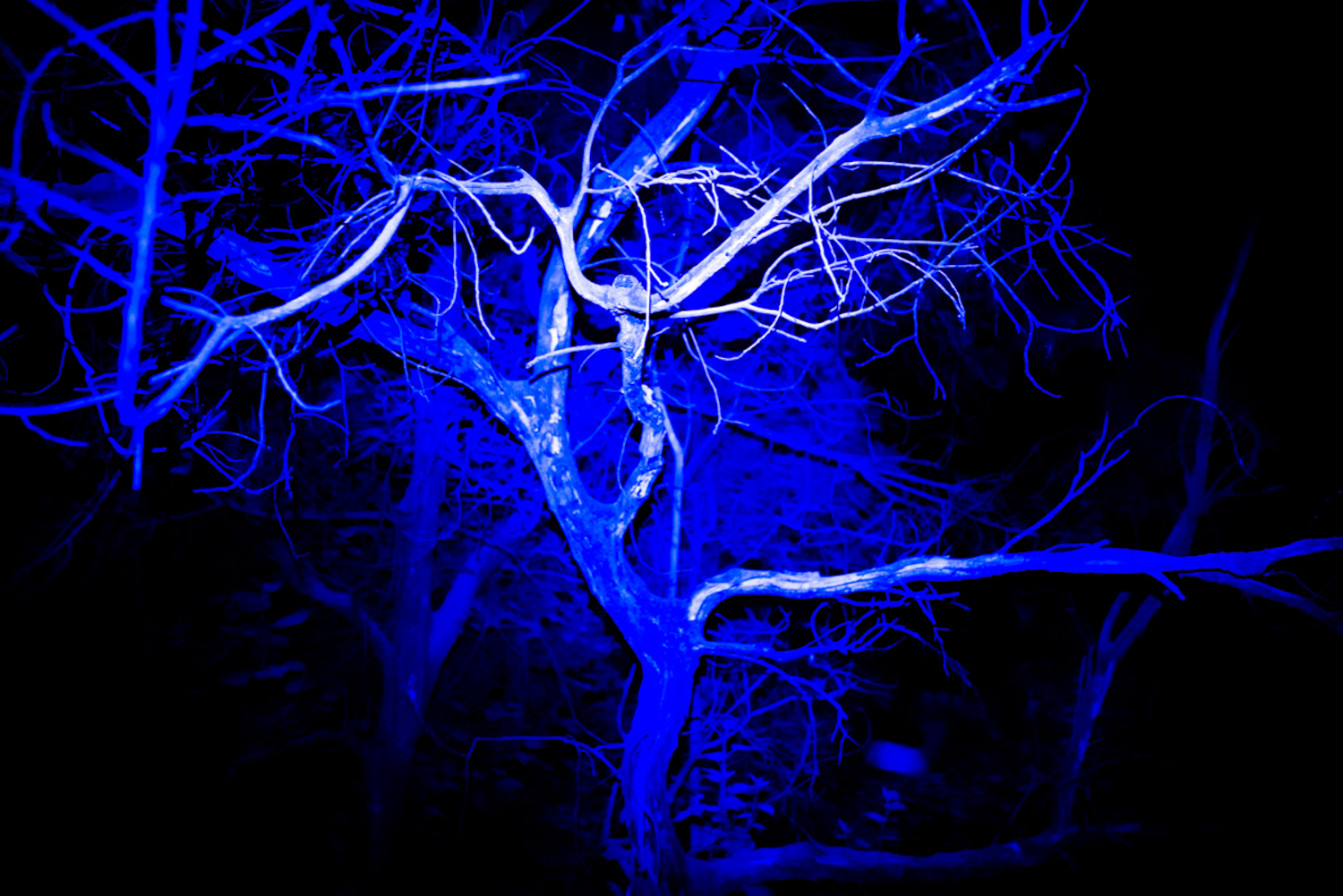Between Grief And Nothing
Statement:
‘Between Grief and Nothing’ is a fictional documentary series that resides at the intersections between mythology, symbolism and performativity to depict the dystopian state of mind caused as an aftermath of last year’s twin Nepal earthquakes that killed nearly 9,000 people and affected another 2.8 million*1. Loss of family and habitat, and over 300 incessant aftershocks exacerbated their sense of fear. Extreme stress and trauma created a dark psychological crevice that was difficult to be portrayed.
The Sleep and Circadian Neuroscience Institute at Oxford University found that ‘Sleeping after a traumatic event or going to bed angry could make bad memories and flashbacks worse, substantially augmenting possibilities of Post-Traumatic Stress Disorder setting in'*2. Trauma interferes with the processing of events, thus corrupting our memory. Likewise, “the photograph can be an aid to memory, but it can also become an obstacle that blocks access to the understanding of the past. It can paralyse the personal and political ability to think beyond the image in the always-fraught project of remembrance,” cautioned David Campany*3.
This series attempts to represent that fear and dystopia. It is not a journalistic representation, or documentation of the cause and effects in the documentary sense. Allan Sekula in ‘Dismantling Modernism, Reinventing Documentary’ wrote, “Documentary has amassed mountains of evidence. And yet, in this pictorial presentation of scientific and legalistic ‘fact’, the genre has simultaneously contributed much to spectacle, to retinal excitation, to voyeurism, to terror, envy and nostalgia, and only a little to the critical understanding of the social world.”*4 The News industry had precisely done that in their coverage of Nepal.
Creating another archive regurgitating the gore and suffering would have further highlighted the futility of our myopic visual approaches. Anastasia Taylor-Lind in a recent article ‘Why Photojournalism Needs Diverse Storytelling Approaches’ in context of World Press Photo’s 2016 winners laments, “This year, I see a desperate lack of diversity in the winners. There seems to be a homogenized aesthetic approach to subjects. We need to dispense with the old adage: ‘This is the way we’ve always done it’.” *5
I researched on local iconographic codes, and used Lakhey, a demon god from Nepal’s (Newari) mythology as an anthropomorphic form to create a hyper-real imaginary space. In written references, ‘Lakhey wears a huge red, terrifying mask with prominent eyes, protruding fangs, serrated teeth; a dark red wig and disheveled red tresses complete the awe-inspiring countenance of the man-eating demon as he dances and thrashes his limbs. It is believed that the spirit of the Lakhey resides in the demonic mask. As the performer puts the mask on, the spirit takes over’*6.
In my depicted version, he acquires the symbol of destruction. The red from his mask, hair and clothes translates landscapes, rivers and even faces into playgrounds of traumatic flashbacks, symbolising violence. Then follows the psychedelic midnight blues, the mind’s journey into that bottomless chasm of paranoia and nightmares. The series rests on the juxtaposition of dichotomous elements situated in time and space. For e.g. in the series people are seen sleeping, when in fact they were struggling to sleep. But once they descended into sleep-mode, Lakhey emerged.
This incongruous contextualisation was necessary. Psychotherapist Carl G. Jung in ‘Psychology of the Unconscious’ spoke of symbolism and mythology as ‘the natural languages of the unconscious’*7.
By exploring an alternative approach to Western iconographic systems emerging out of Christian art, the series uses photographs to comprehend dystopian state of mind by rooting the tragedy in Nepal’s folklore and cultural imagination, without letting descriptive images further corrupt our collective memory.
—————————-
References:
*1 "Aftershocks of Gorkha Earthquake". National Seismological Centre, Nepal. Source: http://www.seismonepal.gov.np/ . Accessed on 16/02/2016] and https://en.wikipedia.org/wiki/List_of_aftershocks_of_April_2015_Nepal_earthquake. Accessed on 15/02/2016
*2 Porcheret K, Holmes EA, Goodwin GM, Foster RG, Wulff K. ‘Psychological effect of an analogue traumatic event reduced by sleep deprivation’. SLEEP 2015;38(7):1017–1025. Also published in http://www.journalsleep.org/ViewAbstract.aspx?pid=30068. Accessed: 03/03/2016 11:08 and http://www.telegraph.co.uk/news/science/science-news/11708625/Sleep-deprivation-could-prevent-traumatic-memories-and-flashbacks.html. Accessed: 15/11/2015 19:30
*3 Campany, David., “Safety in Numbness: Some remarks on the problems of ‘Late Photography’” published in Where is the Photograph? David Green ed., Photoworks/Photoforum 2003
*4 Allan Sekula ‘Dismantling Modernism, Reinventing Documentary (Notes on the Politics of Representation)’. Source: The Massachusetts Review, Vol. 19, No. 4, Photography (Winter, 1978), pp. 859-883 Published by: The Massachusetts Review, Inc. Stable URL: http://www.jstor.org/stable/25088914. Accessed: 13/02/2016 08:08
*5 Why Photojournalism Needs Diverse Storytelling Approaches by Anastasia Taylor-Lind, published on Feb. 24, 2016; http://time.com/4234808/opinion-photojournalism-world-press-photo/. Accessed on 26/2/2016
*6 https://www.culturalsurvival.org/publications/cultural-survival-quarterly/nepal/demon-among-deities. Accessed on 16 May’ 2015.
*7 Jung, C. G., The Red Book: Liber Novus, ed. Shamdasani, Sonu, tr. Peck, John, Kyburz, Mark, and Shamdasani, Sonu (WW Norton & Co., 2009)
